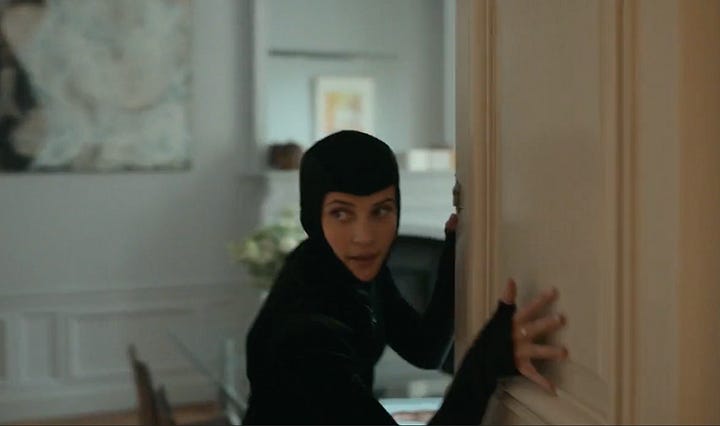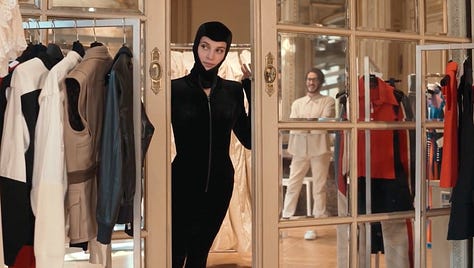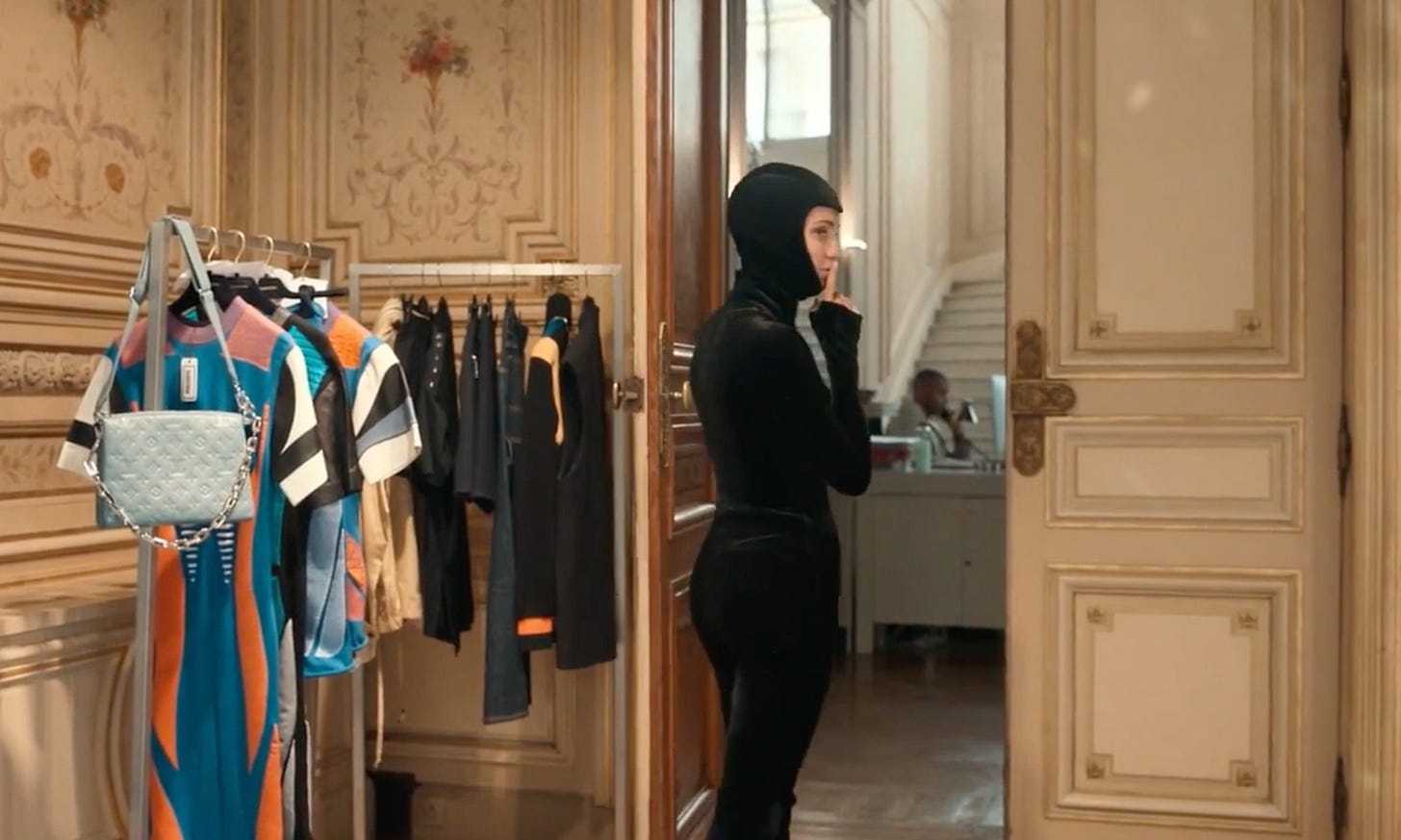This sequence from 2022’s Irma Vep miniseries uses one type of shots / camera movement / edit at the start, then drastically shifts gears partway through.
Whether you call its dramatic shift in techniques ‘changing style’ or ‘establishing tone, then shifting tone’, I’m most interested how it makes us feel the shift within Mira (Alicia Vikander) — how the use of different types of shots, movement, and edit puts us inside the way Mira turns into a new character as she changes clothes.
Cuts and Clips
From the start until 1:34, we see Mira in shorter clips, framed in standard shot-reverse-shots as the edit jumps through small segments of time and shows many characters reactions to Mira.


From 1:34-1:49, the shot holds so we can watch Mira slip away, before cutting into a 40-second oner which completes the sequence.
Oner, Alone
The camera watches Mira slip up stairs, holding the shot even when Mira is not in it, not cutting to anyone’s reaction or acknowledging them in any way.
All together this drastic shift serves to demonstrates how her new clothes have ‘transformed’ her, give us an impression of how time flows for her in this state, and illustrate how her new persona is almost invisible.


Aaaaand Out
The scene transition completely skips Mira’s return to the meeting room — assuming she even does return!
Instead it uses the camera moving past the bannister and an extra in a tan coat walking past camera to make the transition on movement to a completely new location and scene.
(We’ll talk more about this ‘scene transition on movement’ in a coming post.)
What Stays Similar
Now we’ve seen how the sequence is split into types of techniques, let’s look at what stays the same: light and colour, shot size, and mirrors.
Light and Colour
The palette does change, though not a huge shift. The downstairs is ‘warmer’ and upstairs is ‘cooler’ (photos from start and finish), but it’s mostly done with the background and set dressing. Mira doesn’t, for example, slink from a bright, saturated, red-lit downstairs into a darkly shadowed deep-blue upstairs.


Shot Size
In the sequence’s first half, the shot size varied from medium-wides to closeup with the edit; the shot size still changes in the second half, but it’s a ‘live’ change as the camera and Mira move.
Mirrors and Not-Mirrors
So many mirrors! (By the by, ‘Mira’ in Spanish is ‘look’ from the infinitive mirar.)
In the opening half Mira is constantly in mirrors; we see her look at herself in mirror, and we see others in mirrors as they look at her.
As the scene switches, she walks up the stairs, disappears from sight for a moment, then her reflection scampers across the mirror as the last thing before the scene transitions fully into the oner.



Upstairs, though there’s a mirror on the wall and the table is glass, we don’t see Mira’s reflection in any of them . . . however!
Bookending the oner are these gorgeous shots where the camera ‘frames’ her twice in a hanging light fixture in the staircase. It almost looks like a ship’s mirror, but instead of reflecting Mira, it concentrates our eyes on her.


Takeaways
Plenty of ways exist to show-not-tell your character going through some sort of shift: dialogue, drastic colour changes, significantly changing your shot size, sound mix, score, etc.
But sometimes a simple shift — like moving from an every-few-seconds-edit into a oner, and subtly changing a few details like ‘including reflective surfaces but now without seeing the character in them’ — will do the trick.



